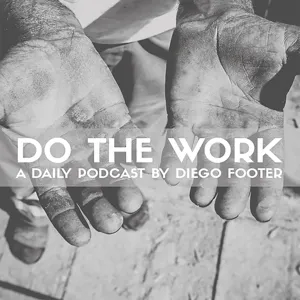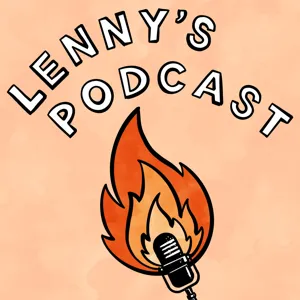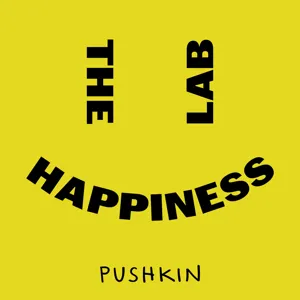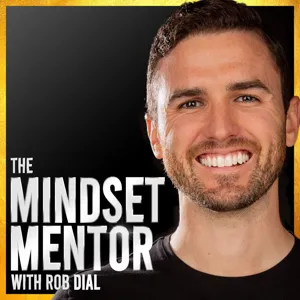Podcast Summary
How the Built Environment Affects Human Behavior: The built environment plays a significant role in influencing human behavior, productivity, and well-being. Certain school environments can improve academic performance in children. No Stupid Questions podcast offers valuable insights into this topic.
In the No Stupid Questions podcast, hosts Angela Duckworth and Stephen Dubner discuss how the built environment affects human behavior. They explore how elements such as lighting, temperature, and architecture can impact an individual's productivity and well-being. They also discuss the finding that certain school environments can lead to improved academic performance in children. Unlike Freakonomics Radio, No Stupid Questions is more conversational, with less fact-checking during the production process. Despite this, it has become one of the most popular shows in the Freakonomics Radio Network. If you're interested in understanding how the environment affects us, No Stupid Questions is a great podcast to follow.
The Power of Architecture: Building Better Environments for Education and Civic Discourse: The design and architecture of schools and public spaces can have a significant impact on academic performance and behavior, making it crucial for designers to consider the potential effects of their work.
Architecture and design have the power to improve lives, and research has shown that school environments can significantly impact academic performance. However, the influence of the built environment on psychology has been intuited for much longer than research has been conducted. Winston Churchill's quote, 'First we shape our buildings and afterwards our buildings shape us,' encapsulates this sentiment. The design of Parliament is a perfect example of how architecture can influence behavior - benches facing each other promote dialogue and accountability, creating a more civil discourse. Ultimately, the built environment can have a lasting impact on both individuals and communities, making it crucial for designers to consider the potential effects of their work.
The Impact of Architectural Design on Academic Progress: Architectural design can affect academic progress. Seven key design parameters explain 16% of the variation in pupils' progress. Architects must consider the intended purpose of the building and its impact on people's emotions, behavior, and cognitive abilities.
Architectural design can have a significant impact on people's behavior and academic progress. A study conducted on 153 classrooms in 27 elementary schools identified seven key design parameters that explained 16% of the variation in pupils' academic progress achieved. While the study is correlational and not based on random assignment, the effect of architecture cannot be ignored. This finding emphasizes the importance of designing buildings and spaces that are conducive to the desired behavior and outcomes. Architects must consider the intended purpose of the building and the impact their design may have on people's emotions, behavior, and cognitive abilities.
The 7 Key Design Parameters for a Well-Designed Classroom: Natural lighting, air quality, color, and flexibility can greatly improve a student's academic performance. Mimicking the outdoors with natural features can have half the impact, while personalization and stimulation also play important roles.
The seven key design parameters in a classroom include naturalness (light, temperature, air quality), stimulation (color and complexity), and individualization (ownership and flexibility). Half of the effect of built environment on classrooms is attributed to naturalness, which includes features that mimic being outside on a nice day. The other half is evenly split between individualization and stimulation. The researchers found that design and architecture of a place affect individual performance of school children, with academic achievement being positively correlated with a well-designed classroom. The Goldilocks principle applies to the features of stimulation, with an optimal amount of color and complexity. Individualization includes personalization and flexibility in the classroom.
The Impact of Noise Pollution on Academic Performance: Noise pollution can significantly affect academic performance, with distractibility varying among individuals. Understanding our sensitivity to noise and other external factors can help us optimize our work environments and increase effectiveness in achieving our goals.
Arline Bronzaft's unscientific study showed that noise pollution can have a significant impact on academic performance, with full grade level differences observed between noisy and quiet classrooms. While some individuals may claim to be unaffected by their environment, the reality is that distractibility varies among individuals and can have real consequences on productivity. Understanding our individual sensitivity to external factors like noise can help us optimize our work environments and increase our effectiveness. It's important to consider the impact of our surroundings on our ability to focus and prioritize accordingly to achieve our goals.
How Your Physical Environment Impacts Your Productivity and How to Optimize It: Your surroundings can affect your focus and productivity. Identify whether you need a quiet workspace or not. Understanding how your environment affects you can help you create a productive workspace that promotes success.
The physical space around us can greatly impact our ability to focus and be productive. Some people, like Team Levitt, are not easily distracted and can work in any environment, while others, like Team Dubner, are highly sensitive to their surroundings and need a quiet, distraction-free workspace. The concept of cognitive drift emphasizes the importance of having access to all necessary information in a timely manner. Understanding how our environment affects us can help us create a space that promotes productivity and success.
Cognitive Drift and the Drawbacks of Open Office Spaces: In a world full of distractions, it's important to create a workspace that minimizes cognitive drift. Open office spaces can lead to less collaboration and more distractions, highlighting the need for private working spaces, especially in a post-COVID world.
Cognitive drift is a common problem in the modern workplace, where distractions abound. To work well, people need to minimize the possibility of cognitive drift. This does not only mean controlling the physical environment, but also paying attention to factors like noise and light pollution. The idea behind open offices was to increase collaboration and creativity, but research has shown that it can lead to less collaboration. People in open offices are often prone to distractions like Slack or email and tend to avoid having sensitive conversations in a public setting. The return to the office post-COVID has highlighted the importance of having a private space to work in.
The Importance of Balancing Solitude and Community for Mental and Academic Well-being: Building a school that doubles as a community center can provide the necessary balance between solitude and community for improved mental and academic well-being.
Solitude is important for concentration and keeping the fish of our thoughts on the line, as Virginia Woolf said. However, the pandemic has proven that complete isolation, even in a-room-of-one's-own, can take a toll on our mental and academic wellbeing. That's why there is a need for a balance between solitude and community, which requires a place that accommodates both. Yildiz's vision of building a primary school that shares its facilities with the community and acts as a neighborhood center is a step towards achieving that balance.
The Negative Ripple Effect of a Lack of Social Infrastructure and the Importance of Mindful Design in the Workplace: We need to prioritize the design of public spaces and workplaces to foster social connection, prevent cognitive drift, and avoid relying solely on software solutions that may exacerbate underlying issues.
The degradation of social infrastructure, such as public gathering places, leads to negative consequences such as weakened social networks, increased crime, isolation of older and sick individuals, rising distrust, and decreased civic participation. This was evident during the pandemic. Architecture and design not only matter for schools but also for society, and it’s important to consider how they affect us. Cognitive drift and other issues can arise when we’re constantly engaging with numerous apps and programs, which has become increasingly prevalent in the workplace. Rather than addressing root causes, we often resort to software solutions which only compound the problem.
How Focusing on the Built Environment Can Improve Workflow and Reduce Interruptions: Investing in a well-designed and psychologically pleasing working environment can enhance productivity and ultimately benefit both employees and businesses. The Seaside Neighborhood School in Florida serves as an excellent example of creating such an environment.
Almost 30% of enterprise apps add no value and are duplicative, causing interruptions and cognitive drift in the workflow of employees. The incentive to sell more apps by software providers is high, leading to a paradox. The ideal solution is to create a built environment that is psychologically pleasing, checks all the boxes of a good working environment, and encourages community interaction while allowing for personal space. The Seaside Neighborhood School in Florida is an excellent example of this, with its white wooden pavilions, central green, and beautiful architecture. By focusing on the built environment, the industry can reduce interruptions and improve the quality of work done by employees.
Improving the Built Environment in Hospitals: Incorporating natural light, fresh air, low noise, personalization, flexible furniture, functional colors, and an open layout can positively impact patient recovery and lead to better healthcare outcomes.
The built environment in hospitals plays a crucial role in patient wellbeing. Studies have shown that exposure to nature, natural light, low noise levels, personalization, and lack of clutter have a positive impact on patient recovery. However, most hospitals fail to provide these basic needs. Designers, like Yildiz, and the next generation should focus on improving the built environment in hospitals by incorporating the seven factors that matter most, which are daylight, fresh air, low noise, personalization, flexible/movable furniture, functional colors, and open layout. Improving the hospital environment can help patients sleep better and recover faster, ultimately leading to better healthcare outcomes.
Prioritizing Hygiene and Comfort in Bathroom Design: Doorless bathrooms are a creative solution that can prevent the spread of germs and promote good hand hygiene. The key is having a mindset that prioritizes experimentation and a willingness to rethink traditional design. Small, low-cost changes can make a big difference in improving daily life.
Bathroom access and design should prioritize hygiene and comfort, especially in spaces like schools and hospitals. Doorless bathrooms are a creative solution that can prevent the spread of germs and promote good hand hygiene. The key is having a mindset that prioritizes experimentation and a willingness to rethink traditional design. Additionally, respecting others and minimizing noise can go a long way in creating a positive and functional built environment. Small, low-cost changes can be just as effective as high-dollar solutions and can make a big difference in improving daily life.
The Role of Respect in the Built Environment: Being aware of how our actions affect others in public spaces is crucial for a peaceful and less noisy environment. Good design can shape behaviors and attitudes, making it essential to invest in research to measure the benefits and losses of built environments.
Respect plays a crucial role in maintaining peaceful and less noisy environments. People need to be aware of how their actions affect others and vice versa, especially in the built environment. Good design can help shape behaviors and attitudes in public spaces, making it essential to invest in more researchers to measure the benefits and losses of built environments. Churchill's quote on shaping buildings has proven to be correct in the U.K. parliament after it was destroyed in World War II, as it reflects the country's two-party system in its design. We need professionals like Yildiz to focus on the benefits of excellent design beyond individual benefits.
The Impact of Noise on Students and the Importance of Fact-Checking: Noise levels can have a significant impact on academic performance, and evidence-based design can improve educational environments. It is essential to fact-check information, even from reputable sources, to avoid errors and mispronunciations.
A study found that students on the noisier side of a building performed consistently lower on standardized reading tests than those in quieter rooms. After implementing cushioned rubber pads on nearby subway rails and sound-absorbing materials in classrooms, reading levels improved by up to a grade level. Environmental psychologist Roger Ulrich is credited with popularizing evidenced-based design in healthcare. Mispronunciations and errors can occur in even the most reputable sources, highlighting the importance of fact-checking. Finally, listener feedback from recent episodes of No Stupid Questions addressed the cultural differences in offensive language, the struggle with teeth grinding, and the accuracy of snap judgments.
The Importance of Keeping an Open Mind in Relationships and Beyond: First impressions aren't always accurate, so approach people with curiosity and empathy to understand their background and motivations. This mindset can help you form fulfilling relationships and navigate various areas of life with greater understanding and compassion.
First impressions can be misleading, and it's important to keep an open mind. Cultural differences and personal circumstances can influence behavior and decision-making. Despite reservations, dating someone who may not fit your initial expectations could lead to a happy, fulfilling relationship. It's important to approach people with curiosity and empathy to understand their background and motivations. This mindset can also be applied to other areas of life, such as work environments and social interactions. Don't judge a book by its cover; there may be more to a person or situation than meets the eye.






